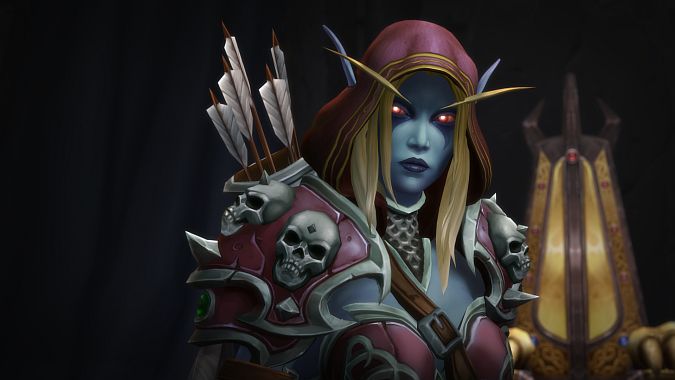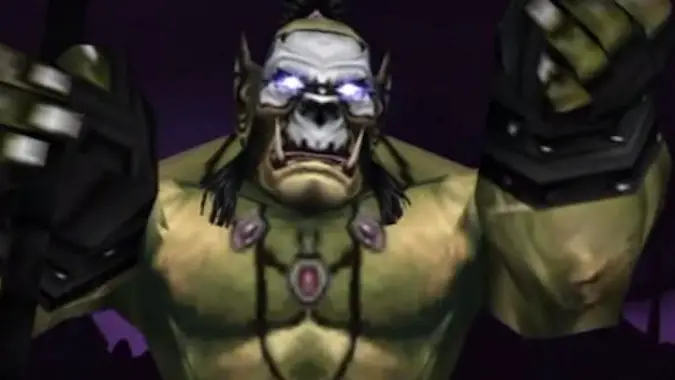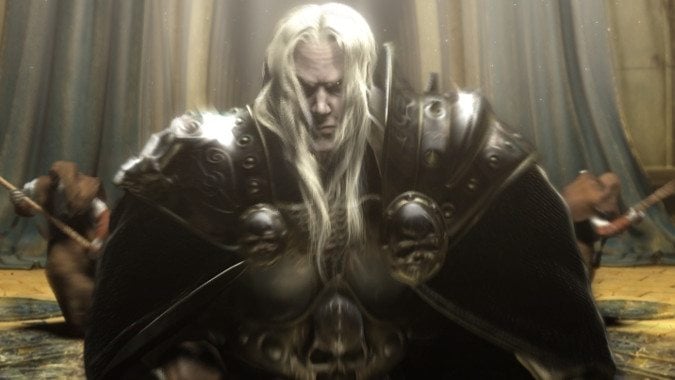How to recreate your favorite World of Warcraft villains in Dungeons and Dragons

There’s a lot about World of Warcraft and Dungeons and Dragons that translate well to each other — and fans have taken notice. Blood and Thunder is reimagining WoW‘s races in D&D. Tulok the Barbrarian recreates characters in D&D, and while he has not done any WoW characters, he has created some Overwatch characters, like Mercy and Moira. Previously, Matthew Rossi showed us how to make Kassandra from Assassin’s Creed Odyssey in this format. Practically all of our favorite characters could be adapted to D&D.
So, let’s do just that — we’re going to take a look at a few famous Warcraft villains, and discuss how they could be made in a D&D campaign.

How to play Illidan in D&D
- Race: Feral Tiefling
- Class: Warlock, Hexblade patron with Pact of the Blade
- Highlights: No armor, dual-wields bladed weapons, mobile, fire and other fel-like damage, demons
For race, the best choice to portray Illidan is Feral Tiefling. This is the player’s demon race, so this character will look an Elf-turned-demon — and the feral version has wings and the ability to fly without using a spell slot. However, if you want to stick to lore, then either choose the Dark Elf (Drow) subrace of Elf, or choose the new Custom Lineage from Tasha’s Cauldron of Everything and just describe them as an Elf with demonic features.
For class, there is no Demon Hunter in Dungeons and Dragons, so we’re going to steal from the Warlock class. The most accurate way to portray Illidan — or any Demon Hunter — is the Hexblade Warlock, with the Pact of the Blade. This will focus on fighting with a bladed weapon or two, while having access to movement, fire and fel-like spells, and excellent vision. For stats, focus on Charisma first for damage, Constitution for staying alive and occasional concentration spells, and Dexterity for armor. After that, it’s up to your preference.
You can wear medium armor — but don’t! Armor of Shadows invocation, Shield and Blur spells can be used to mitigate damage. For Demon Hunter vision, Devil’s Sight invocation will allow vision in darkness, regular and magical. Ghostly Gaze invocation allows you to see through objects, to see enemies on the other side of the wall, and the Witch Sight invocation sees the true form of someone — if a demon is disguised as a human, it is visible. These nicely sum up the Demon Hunter’s true sight.

Demon Hunter flavor is all over D&D
Movement isn’t an issue with Demon Hunters. The Otherworldly Leap invocation allows you to cast Jump on yourself without using a spell slot. Far Step lets you jump around the battlefield even more, and then Expeditious Retreat is like Vengeful Retreat. There’s also Fly, if you aren’t a Feral Tiefling. For Immolation Aura, there are two abilities — Hellish Rebuke, which deals fire damage as a reaction when hit, and Investiture of Flame, a Hexblade feature that surrounds you in flame and deals fire damage to creatures within five feet of you.
There are many abilities that improve your weapon, but there are three that are the most important here. Thirsting Blade, so you can attack twice. Shadow Blade, which allows you to throw your weapon, and summon it to your hand as a bonus action — effectively “throw glaive.” Lastly, Green-Flame Blade, which makes the weapon glow with green fire. It looks Demon Hunter-ish anyway, and also does fire damage to additional targets. Anyone can hold two weapons and attack with their off-hand as a bonus action. More damage would probably be done to have a two-hander in the main, but it wouldn’t look quite as cool.
For the quintessential eyebeam, there’s Eldritch Blast. There is no description what it looks like — the player decides — so you can just say, “green fire bursts from my eyes.” Choose the Agonizing Blast invocation to improve the damage. As for Metamorphosis, at level 17 the Warlock can choose the spell True Polymorph from their Mystic Arcanum. This can also be cast without using a spell slot. Tattoos are an item in the game, so go ahead and find the right one for you.

How to play Sylvanas Windrunner in D&D
- Race: Reborn
- Class: Fighter/Cleric
- Highlights: Great with a bow, raise the dead, Valkyr, cheat death, The Banshee Queen
For race, there is Reborn in the Gothic Lineages — currently in Unearthed Arcana, soon to be official in a new Ravenloft campaign. This is an undead of any racial background, so there’s nothing better for her. For class, Ranger seems more accurate, but is a subpar archer class. Instead, try taking 6 levels of Fighter, but still focus on Dexterity, Wisdom, and Constitution, then choose Archery for Fighting Style, and Arcane Archer for Martial Archetype. This will give special types of arrows. Sylvanas will be able to shoot twice with a single action, and take an additional action once per short rest.
Now a skilled archer, take the next 14 levels as a War Domain Cleric. This will add extra damage to arrows, and allow an extra shot as a bonus action — but that’s not what Sylvanas is most known for anymore. There are a number of spells in the school of Necromancy on the Cleric list that return people to life, Raise Undead, or Control Undead that already exist. Technically, Sylvanas doesn’t raise the dead herself, the Valkyr do. Spirit Guardians calls forth winged protectors, and Summon Celestial and Conjure Celestial spells will give specific Valkyr to do her bidding.
Sylvanas has cheated death repeatedly, and can do so again with Death Ward. A great way to spread a plague is with Contagion, but she may not need that spell, as she had nothing to do with Wrathgate. And how does she pin down Bolvar? Blade Barrier is a sharp, ranged area of attack used to both hurt and force an enemy into a spot. Move him into a Glyph of Warding that has Hold Person prepared on it, and he’s paralyzed, and his Helm of Domination is as good as yours.
Finally, there is her Banshee form. Etherealness allows her to take a ghostly form and bypass the material world. When leveling and there’s an option for a feat, go with Shadow Touched (Wisdom), take the spell Cause Fear, as this isn’t on the Cleric spell list. This can be used to frighten a crowd of enemies — a very Banshee-like thing to do. Freedom of Movement will keep the Banshee Queen moving across the battlefield, nothing stopping her. If all else fails, or if someone says the Horde is nothing right in front of them, Plane Shift will allow the group to nope right on out to the Shadowlands.

How to play Ner’zhul’s Lich King in D&D
- Race: Half-Orc
- Class: Warlock/Wizard multiclass
- Highlights: True necromancer power, create an undead army, serve a General of the Burning Legion, can also have Shaman elemental powers
The D&D playable Orc race is Half-Orc. If that doesn’t sit well, then there is an Eberron Orc, or you could use a Custom Lineage, then describe him as a full-blooded Orc from another planet, with his face painted white. For stats, focus first on Intellect, then Constitution and Charisma, then Wisdom, and dump Dexterity and Strength. For level 1, pick Warlock with the fiend patron. This is more for flavor than necessity. Ner’zhul served Kil’jaden unknowingly at first, then Teron Gorefiend, and had fiends as patrons. When he was forced into the role of Lich King, he was taught new spells.
From here on out just take Wizard levels. At Wizard level 2, choose School of Necromancy. The Wizard has access to a lot of spells. For flavor, choose any spell that opens portals, like Gate, which opens a portal to another plane of existence. Ner’zhul was also a Shaman before Kil’jaden’s interference, but then he lost his connection to the elements, so you may or may not want to take elemental spells to capture that Shamanistic past. Also, any ability that spreads plagues and disease, like Blight or Infestation.
Most importantly, take every necromancy spell that resurrects the undead. This includes Animate Dead, Finger of Death, Summon Undead, Create Undead, and Command Undead. Furthermore, there is an undead, Mummy Lord, which can also be used to Animate Dead. Building an army over days, and using the Mummy Lord, players have been known to have up to around 200 undead minions under their control, which is lot for a DM to keep track of but doesn’t really bother the Lich King.
Additionally, the newest Unearthed Arcana added a spell called Summon Draconic Spirit which allows a Wizard to summon a dragon that has an ice breath attack. Take this ability for later.

How to play Arthas’ Lich King in D&D
- Race: Variant Human
- Class: Paladin, Oath will vary
- Highlights: Strong against undead foes, powerful if questionable leader, faithful steed, can summon Valkyr
Arthas is a Variant Human. Put stats in Strength, Charisma, and Constitution. Take Inspiring Leader as your starting feat, with the Paladin class. At level 2 choose Oath of Devotion. This is a righteous path, and focuses on defeating undead. Pick up the spell Find Steed. After the Culling of Stratholme and the trip to Northrend, when leveling up Arthas should switch to the Oath of Conquest. This is about doing what must be done even if it is difficult, and the motto, “you are either with me or against me.” Be sure to have picked up Find Greater Steed. Finally, after upgrading your weapon and realizing there is more power to be had out there, switch to Oathbreaker — this is a Paladin who forsakes their sacred oaths to serve a dark ambition. You’ll want Summon Celestial, to have a Val’kyr.
Now, to really tap into the power of the Lich King, we need to homebrew. The Helm of Domination isn’t a real item in D&D so you’ll need to convince the DM this needs to exist. Give this to Arthas, containing the essence of Ner’zhul, and all of his power. This will create a level 40 character. Your character will now have all the armor, strength, and flying horse of Arthas, but the magic, demonic servitude, and undead army of Ner’zhul. With the Summon Draconic Spirit spell, bring forth Sindragosa, then order the undead to build a citadel around you.
At this point, you are not a player in a campaign — you are a villain for a group of players to go after. This character may be better for a Dungeon Master to use. I haven’t included Bolvar’s Lich King because he denied the power of the previous two, and as a result, failed his saving throws in the fight against Sylvanas and lost pretty quickly.
This should be more than enough to get you started in D&D with some of the most iconic villains WoW has to offer. It may take a bit of finesse to make this work, but the trade off when you suddenly reveal your true colors will be worth it. Not much is more fun than villainy.
Please consider supporting our Patreon!
Join the Discussion
Blizzard Watch is a safe space for all readers. By leaving comments on this site you agree to follow our commenting and community guidelines.





